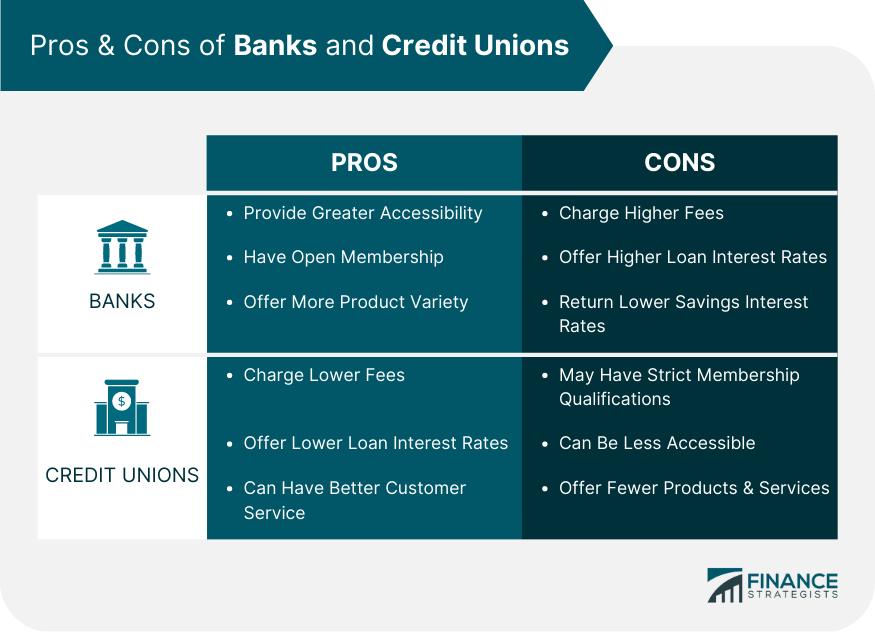Hybrid Line of Credit: Flexible Funding Options from Your Wyoming Credit Union
Hybrid Line of Credit: Flexible Funding Options from Your Wyoming Credit Union
Blog Article
The Ultimate Overview to Comprehending Lending Institution

Cooperative credit union stand as special monetary entities, rooted in concepts of mutual assistance and member-driven procedures. Past their foundational worths, recognizing the complex functions of credit scores unions includes a much deeper exploration. Unwinding the intricacies of subscription eligibility, the development of services provided, and the distinct advantages they bring needs a detailed exam. As we browse through the intricacies of credit score unions, an informative trip waits for to clarify these member-focused establishments and how they vary from traditional financial institutions.
What Are Cooperative Credit Union?
Credit history unions are member-owned monetary institutions that provide an array of financial services to their members. Unlike traditional financial institutions, cooperative credit union operate as not-for-profit companies, suggesting their key focus gets on serving their members rather than making best use of revenues. Participants of a credit report union usually share a common bond, such as benefiting the same employer, belonging to the same community, or being component of the exact same organization.
One of the vital benefits of lending institution is that they usually use higher rate of interest on savings accounts and lower rate of interest prices on car loans compared to banks. Credit Union in Wyoming. This is since lending institution are structured to profit their participants straight, enabling them to pass on their incomes in the type of better rates and less charges. Additionally, cooperative credit union are known for their individualized client service, as they prioritize developing partnerships with their participants to recognize their distinct economic requirements and objectives
Background and Evolution of Credit Score Unions
The origins of member-owned monetary cooperatives, understood today as debt unions, trace back to a time when areas sought options to standard banking organizations. The concept of credit rating unions come from the 19th century in Europe, with Friedrich Wilhelm Raiffeisen usually attributed as the leader of the cooperative financial motion. Raiffeisen started the first recognized cooperative credit union in Germany in the mid-1800s, highlighting community support and self-help principles.
The advancement of lending institution proceeded in North America, where Alphonse Desjardins developed the very first credit scores union in Canada in 1900. Shortly after, in 1909, the initial united state lending institution was created in New Hampshire by a team of Franco-American immigrants. These early cooperative credit union run on the fundamental concepts of shared support, autonomous control, and participant ownership.
Over time, lending institution have actually grown in popularity worldwide as a result of the original source their not-for-profit framework, concentrate on serving members, and supplying affordable monetary services and products. Today, cooperative credit union play an important duty in the monetary sector, offering available and community-oriented banking choices for businesses and individuals alike.

Membership and Qualification Criteria
Subscription at a cooperative credit union is commonly restricted to individuals fulfilling particular qualification criteria based on the organization's starting concepts and regulatory requirements. These standards commonly include elements such as geographical place, work condition, membership in specific companies, or association with specific groups. Cooperative credit union are known for their community-oriented strategy, which is reflected in their subscription needs. Hybrid Line of Credit. As an example, some credit rating unions may only serve individuals who live or work in a particular location, while others may be customized to workers of a particular business or members of a particular organization.
In addition, cooperative credit union are structured as not-for-profit companies, indicating that their key goal is to serve their participants as opposed to generate profits for investors. This emphasis on member service often converts into even more customized attention, lower costs, and affordable rate of interest on savings and financings accounts. By satisfying the qualification standards and coming to be a participant of a cooperative credit union, people can access a series of economic items and services customized to their details demands.
Providers and Products Offered
One of the key facets that establishes debt unions apart is the diverse range of monetary services and items they supply to their participants. Debt unions generally give standard banking services such as savings and checking accounts, loans, and credit cards.
In addition, lending institution often provide hassle-free online and mobile financial choices for members to quickly handle their funds. They may provide perks visit here such as shared branching, enabling members to access their accounts at various other credit unions across the nation. Some lending institution additionally give insurance coverage items like home, life, and automobile insurance policy to assist members shield their possessions and liked ones.
:max_bytes(150000):strip_icc()/GettyImages-184268471-5bcba6ad46e0fb0051ae6958.jpg)
Advantages of Financial With Lending Institution
When considering monetary establishments, discovering the benefits of banking with debt unions discloses one-of-a-kind benefits for members seeking customized service and affordable rates. Unlike huge banks, credit report unions are member-owned and prioritize structure solid relationships with their members. Overall, financial with a credit rating union can supply a more customized, cost-efficient, and member-centric monetary experience.
Conclusion
In verdict, credit unions stand out as member-owned monetary establishments that focus on offering their members over maximizing earnings. With beginnings dating back to 19th century Europe, credit report unions adhere to concepts of common aid and member possession.
Credit report unions are member-owned economic establishments that provide an array of financial services to their members. The concept of credit history unions originated in the 19th century in Europe, with Friedrich Wilhelm Raiffeisen often you could look here attributed as the pioneer of the cooperative financial motion.The advancement of debt unions proceeded in North America, where Alphonse Desjardins developed the very first credit report union in Canada in 1900. Credit unions normally offer conventional financial services such as financial savings and inspecting accounts, loans, and credit report cards.When thinking about financial institutions, discovering the benefits of banking with credit history unions exposes distinct advantages for participants looking for tailored solution and competitive rates.
Report this page